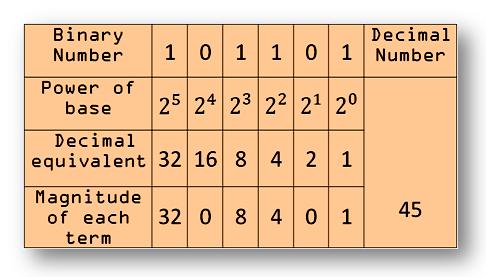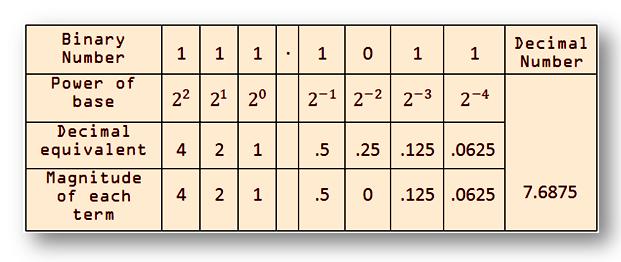Subscribe to our ▶️ YouTube channel 🔴 for the latest videos, updates, and tips.
Binary Number System
Here we will discuss about the binary number system we already know binary numbers play a vital role in the design of digital computers.
Hence a detailed discussion of binary number system is given in this section. Binary number system uses two symbols 0 and 1 and its radix is 2. The symbols 0 and 1 are generally called BITS which is a contraction of the two words Binary digits.
An n-bit binary number of the form an-1 an-2 ….. a1 a0 where each ai (i = 0, 1, …. n - 1) is either 0 or 1 has the magnitude.an-1 2n-1 + an-2 2n-2 + …….+ a1 21 + a020.
For fractional binary numbers, the base has negative integral powers starting with -1 for the bit position just after the binary point.
The bit at the extreme left of a binary number has the highest positional value and is usually called the Most Significant Bit or MSB. Similarly, the bit occupying the extreme right position of a given binary number has the least positional value and is referred to as the Least Significant Bit or LSB.
To facilitate the distinction between different number
systems, we generally use the respective radix as a subscript of the number.
However the subscript will not be used when there is no scope of confusion.
In binary number system a few examples on binary numbers and their decimal equivalents are given below:
1011012 = 1 × 25 + 0 × 24 + 1 × 23 + 1 × 22 + 0 × 21 + 1 × 20= 32 + 0 + 8 + 4 + 0 + 1
= 4510
The above results can be more clearly expressed in the following manner:

Binary point
= 1 × 22 + 1 × 21 + 1 × 20 + 1 × 2-1 + 0 × 2-2 + 1 × 2-3 + 1 × 2-4
= 4 + 2 + 1 + .5 + 0 + .125 + .0625
= 7.687510
The above results can be more clearly expressed in the following manner:

These are the basic examples shown above.
From Binary Number System to Home Page
Didn't find what you were looking for? Or want to know more information about Math Only Math. Use this Google Search to find what you need.


New! Comments
Have your say about what you just read! Leave me a comment in the box below. Ask a Question or Answer a Question.